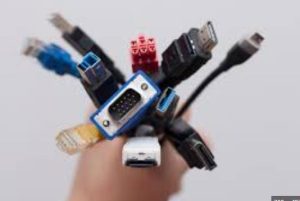What Are the Steps to Terminate Coaxial Cable?
Terminating a coaxial cable correctly is essential for optimal signal transmission. Follow these detailed steps to ensure a professional and reliable termination.

Step 1: Gather Your Tools and Materials
Before starting, make sure you have all necessary tools and materials:
- Coaxial cable (e.g., RG6, RG59)
- Coaxial cable stripper
- Compression or crimp connectors
- Compression or crimping tool
- Cable cutter
- Utility knife
Step 2: Cut the Cable to the Desired Length
Using a cable cutter, cut the coaxial cable to your desired length. Ensure the cut is straight and clean to avoid complications during the termination process.
Step 3: Strip the Outer Jacket
Use a coaxial cable stripper to remove approximately 0.5 inches (12.7 mm) of the outer jacket. This exposes the braided shield. Be careful not to damage the shield or the dielectric material underneath. The stripper tool usually has a preset length to ensure accurate stripping.
Step 4: Strip the Dielectric
Strip about 0.25 inches (6.35 mm) of the dielectric material to expose the inner conductor. Ensure the inner conductor is straight and undamaged. This step is crucial for maintaining signal integrity.
Step 5: Fold Back the Braided Shield
Carefully fold back the braided shield over the outer jacket. This ensures it will make good contact with the connector and helps maintain the cable's shielding properties. The shield should be evenly distributed and not bunched up.
Step 6: Attach the Connector
Select the appropriate connector for your cable type (compression or crimp).
For Compression Connectors:
- Slide the compression connector onto the cable until the dielectric is flush with the connector's internal shoulder.
- Use a compression tool to secure the connector. Apply firm pressure until the connector is fully compressed and locked onto the cable.
For Crimp Connectors:
- Slide the crimp connector onto the cable, ensuring the braided shield contacts the connector body.
- Use a crimping tool to crimp the connector onto the cable. Apply consistent pressure to ensure a secure and stable connection.
Step 7: Verify the Connection
Inspect the termination to ensure the inner conductor is properly centered within the connector pin and that the braided shield has solid contact with the connector body. A secure connection is vital for optimal performance.
Step 8: Test the Cable
Use a coaxial cable tester to verify the termination. Connect both ends of the cable to the tester and check for continuity and signal loss. Properly terminated cables will show minimal signal loss and good continuity.
For more detailed information on how to terminate coaxial cables, you can visit this comprehensive guide on how to terminate coaxial cable.
Tips for Successful Termination
- Use the correct connector type for your specific coaxial cable.
- Double-check all measurements and cuts before attaching the connector to avoid errors.
- Practice on a spare piece of coaxial cable if you're new to the process to gain confidence and precision.
By following these steps, you can ensure that your coaxial cable terminations are reliable and efficient, enhancing the performance of your network or RF system. Proper termination techniques are critical for maintaining signal quality and minimizing losses in any coaxial cable application.